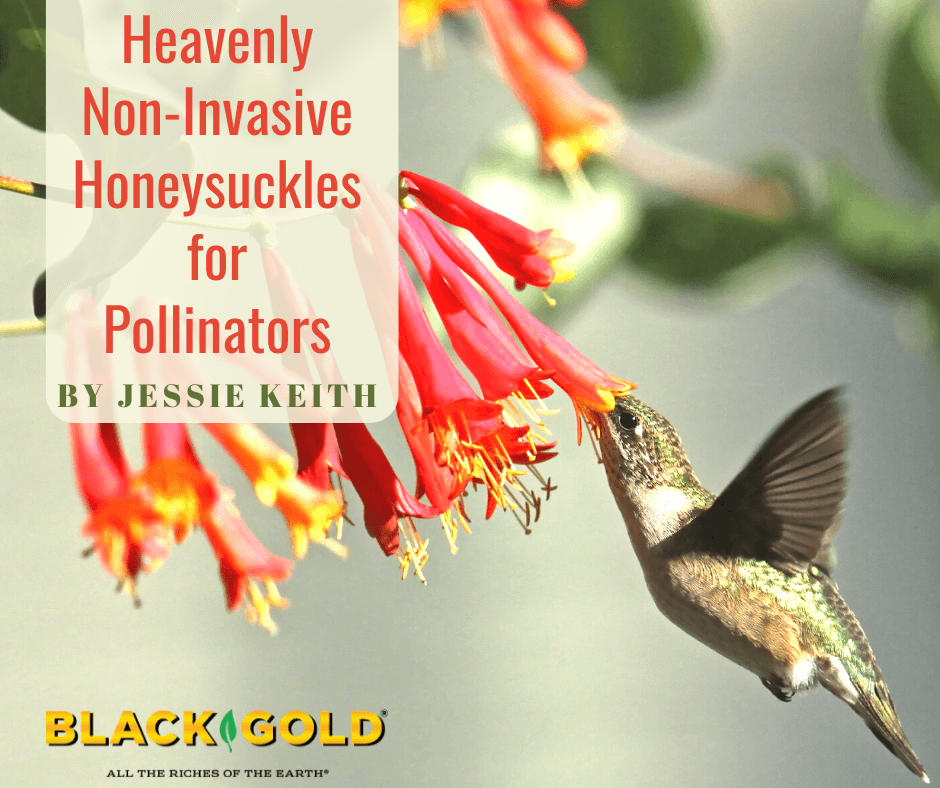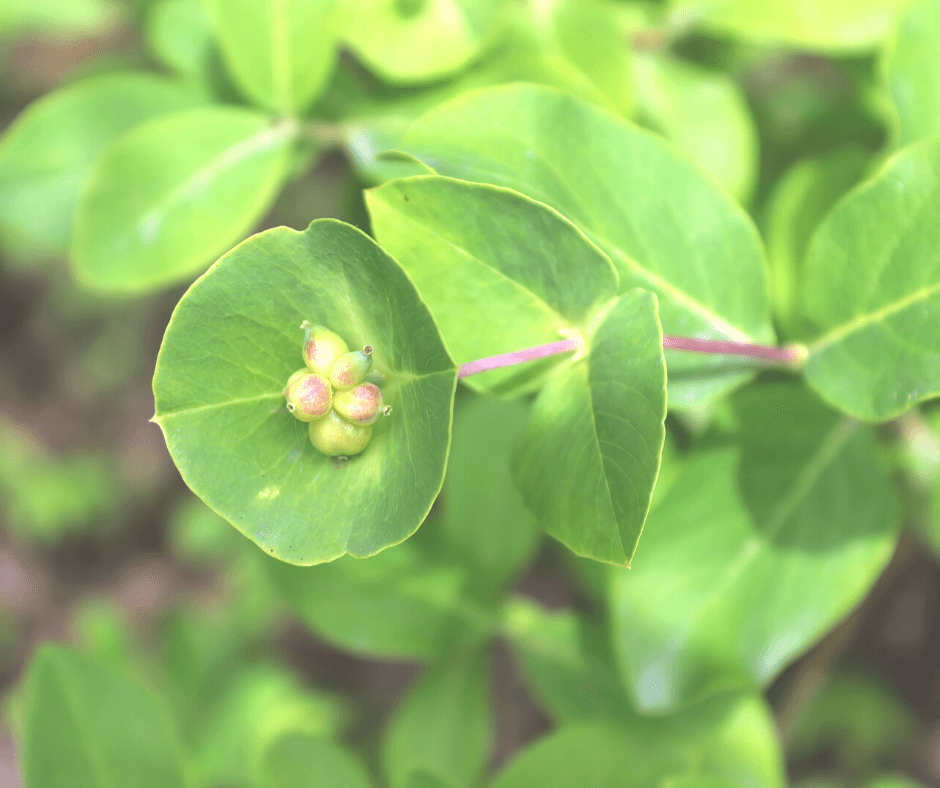
I love the honeysuckles (Lonicera japonica) of old. Their fragrance is unmatched, and their nectar-filled flowers sweet to taste. But sadly, the rampant, rambling wild vines are Asian in origin and unfriendly to North American landscapes. They take over; smothering native landscapes in a sweetly-scented blanket of blooms. There is, however, an upside. There are loads of native, non-invasive honeysuckle vines, loved by hummingbirds, bees, and butterflies, that stay put and look great in gardens.
Hummingbird-Pollinated Honeysuckles
A number of native North American honeysuckle vines are unusual in that they are adapted to pollination by hummingbirds rather than bees and butterflies. Hummingbirds see red and orange, have little to no sense of smell, and need lots of tubular flowers filled with energy-rich nectar to dip their bills into. That’s why these honeysuckles have tubular flowers loaded with sweet nectar, come in shades of red and orange, and generally lack scent. The twining, wood vines are very colorful and long-blooming, so they offer a great display of color in addition to attracting lots of hummingbirds to the garden. All grow and flower best in full sun and appreciate average to fertile, well-drained soil. Here are some of the best to grow.
Trumpet Honeysuckle

Trumpet honeysuckle (Lonicera sempervirens, USDA Hardiness Zones 4-8, 12-20 feet) is a native vine that bears clusters of orange, red, or gold trumpets in summer. It can be found across the eastern United States in meadows and open woodlands. It has been heavily bred for cultivation. Some of the best varieties include ‘Major Wheeler’, a profuse, summer-long bloomer with large clusters of orange-red trumpets. The yellow-flowered ‘John Clayton‘ is such an impressive bloomer, it can flower from early summer to frost. The extra-large, yellow-throated, red trumpets of ‘Blanche Sandman‘ are very colorful and maintain the same manner of bloom–nonstop through summer–as do the large, coral-red blooms of ‘Honey Coral‘.
Brown’s Hybrid Honeysuckle

Brown’s hybrid honeysuckle (Lonicera x brownii (L. sempervirens and L. hirsuta), Zones 4-9, 10-20 feet) is a vigorous flowering vine with flared tubular blooms. The best-known variety is the prolific ‘Dropmore Scarlet‘ with its orange (not scarlet) tubular blooms, blue-green foliage, and appealing red berries that follow the flowers and are eaten by songbirds.
Arizona Honeysuckle
The Southwest-Native Arizona honeysuckle (Lonicera arizonica, Zones 5-6, 4-6 feet) is a short-vined hummingbird-pollinated honeysuckle that has all of the bells and whistles of the other two above with one added benefit–excellent heat and drought tolerance. There are few flowering vines that will grow as well as this one in the hot, dry American southwest. Still, it will grow and flower best with some additional irrigation, so plan to water on occasion. Amend its soil with Black Gold Garden Compost Blend at planting time, and plant it in a location where it gets some midday or afternoon shade.
Bee- and Butterfly-Pollinated Honeysuckles
American honeysuckles that feed native long-tongued bees and butterflies tend to be fragrant and colorful. There are quite a few spectacular types offered at garden centers. Here are several of the best.
Heckrott’s Honeysuckle

These are highly fragrant honeysuckles! The famed Gold Flame Honeysuckle (Lonicera x heckrottii ‘Gold Flame) is an award-winning hybrid that received the Royal Horticultural Society‘s Award of Merit. The exceptional vine is a cross between one European (Lonicera x americana (Lonicera implexa x Lonicera etrusca)) and one American (Lonicera sempervirens) species. The vines are long-blooming, fragrant, and the clusters of tubular flowers come in spectacular shades of pink, gold, magenta, and red. According to the USDA Plants Database, this partially native hybrid has not shown itself to be invasive in American landscapes.
Yellow Honeysuckle
A native of East-Central United States, yellow honeysuckle (Lonicera flava, Zones 5-8, 10-20 feet) is a pretty flowering vine that bears lots of golden yellow or orange flowers in summer. The flowers have a lightly sweet fragrance and are visited by bees, butterflies, and the occasional hummingbird. They are followed by orange-red berries that are eaten by birds.
Grape Honeysuckle

The unusual looks of Kintsley’s Ghost Grape Honeysuckle (Lonicera reticulata Kintzley’s Ghost®, Zones 4-8, 8-12 feet) deserve more attention from gardeners. The East-Central US native has vines decorated with leaves that encircle the stem and cup-like bracts that support clusters of yellow flowers that feed native bees. Kintzley’s Ghost® is even more spectacular because the foliage is eucalyptus-blue, which really sets off the bright flowers.
Siting Honeysuckles

Most of these rambling vines need a sunny, sturdy arbor, fence, pergola, or trellis to grow upon. Plant them in soil that is average to fertile and drains well. Prune and thin the vines yearly to keep them from becoming too overgrown and to disable a build-up of dying stems beneath. Regular pruning and shaping will also encourage good flowering. Honeysuckles typically bloom on new growth.

